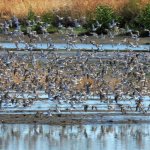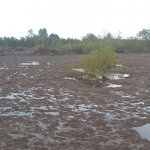By Isadora Angarita-Martinez, Conservation Specialist, WHSRN Executive Office. Claudio Delgado and Jaime Cursach, Fundación Conservación Marina, Chile.
This post was first pubished on Manomet’s newsletter
Until just a few decades ago, biodiversity conservation was carried out without the involvement of the human communities that depend on it for their livelihoods. Biodiversity conservation is now defined by its intrinsic relationship with human beings and their dependence on it and how human communities impact and/or contribute to its management.
An often overlooked aspect of conservation is that our existence and welfare as human beings depends almost entirely on the benefits that we derive from nature. These benefits can be called “ecosystem services.”
We are unaware of any important areas for shorebirds, whether it be breeding areas, migration stopovers, or wintering sites, that do not simultaneously contribute either tangibly or intangibly to human welfare. These areas, due to the variety of ecosystems that are found there, generate endless benefits for nearby communities, as well as those that are thousands of kilometers away.
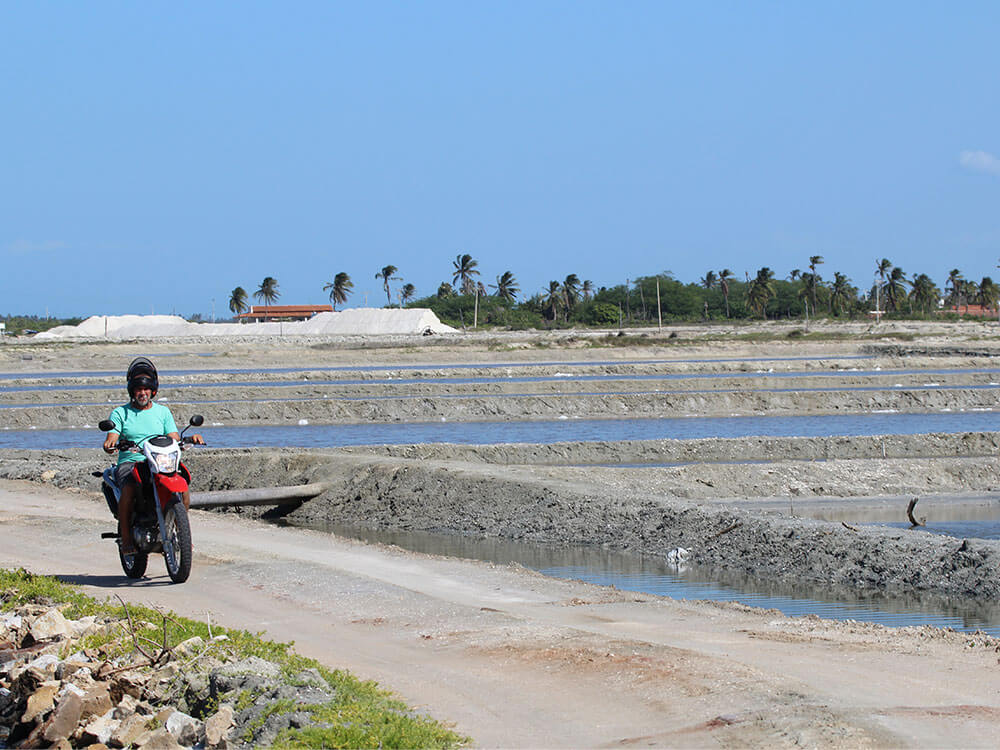
Sites that are important for shorebirds also make important contributions to human welfare. Salt and shrimp pools close to the WHSRN site Banco dos Cajuais, Brazil. Photo: Monica Iglecia
The benefits that these sites provide for humans are numerous, including, amongst others, provision of food and drinking water, maintenance of water quality, prevention of catastrophic climatic events, provision of water for irrigation and livestock, and climate regulation. Additionally, these sites also create spaces for recreation and nature appreciation that provide aesthetic experiences that can positively affect physical and mental health through spiritual enrichment and reflection.
Thus, it is inarguable that ecosystem services benefit humans, ensuring our survival as a species and promoting our well-being as a community. This consideration is now even more important in the context of the climate crisis that we are currently enduring.
Our work seeks to answer the question, “What is the relationship between human well-being and the conservation of important sites for shorebirds?”
The first thing to understand is that in conserving biodiversity, specifically in the case of shorebirds and their habitats, we contribute to the enhanced ecological properties of healthy ecosystems, which translates into clear and undisputed benefits to human communities.
The other approach is to first accept that effectively attending to human needs requires the provision of ecosystem services. This is only possible if we manage and conserve the ecosystems that provide them, thereby requiring a concerted effort towards biodiversity conservation.
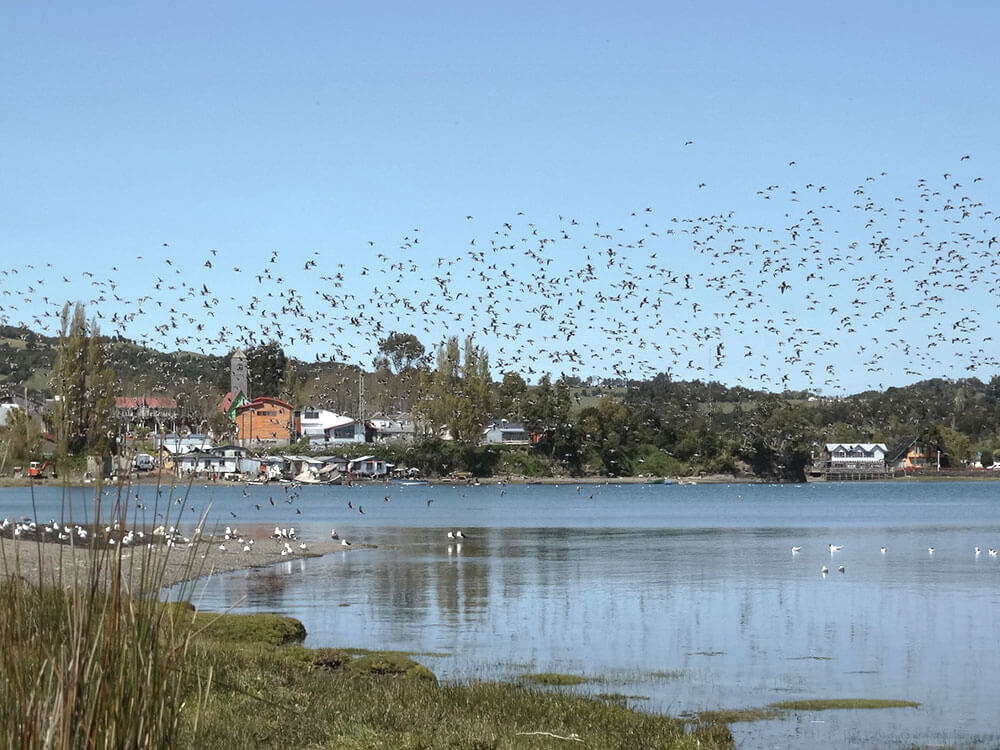
Ensuring the conservation of biodiversity provides the ecosystem services upon which human communities depend for their survival. Coastal wetland Curaco de Vélez, Chile. Photo: Fundación Conservación Marina
One way of illustrating these approaches is to assess ecosystem services, which allow us to quantify the benefits provided by a particular site and predict how any change in management of a site might affect their provision, either negatively or positively.
Assessing and quantifying ecosystem services generates additional information about the benefits of nature that are not commonly considered by traditional conservation approaches. It identifies groups of people involved in, and affected by, the land use and management decisions, contributes towards a just and equitable distribution of benefits, generates awareness, and stimulates public and government support for the conservation of important biodiversity areas. Furthermore, it provides economic, cultural, and social arguments for the conservation of important biodiversity areas.
From the WHSRN Executive Office, we facilitate and build local partners´ capacities to drive their ecosystem services assessments. In collaboration with our local partners, we have implemented and supported assessments in WHSRN sites in Colombia, Brazil, and Chile.
- At the WHSRN site Bocana de Iscuandéin Colombia, the assessment contributed to the local community’s recognition of the benefits they receive from nature and how sea-level rise and changes in rainfall patterns resulting from climate change impacts the provision of these benefits. It also provided the framework for the community to generate viable solutions to the issues caused by these impacts. The process at this site has been organized and facilitated by Asociación Calidris.
- At the WHSRN site Lagoa do Peixe National Park in Brazil,the assessment helped to understand how the local community depends on the park’s benefits and how the state of preservation of the protected area’s ecosystems links to their survival. SAVE Brasil is leading the assessment and the work with the local community at this site.
- At the WHSRN sites Humedales Orientales de Chiloéand Humedales de Maullín in Chile the assessment results provided critical input for the development of management plans for three new protected areas.
In the cases of Chiloé and Maullín, the participatory processes for the assessment of ecosystem services were organized and facilitated jointly with our partner Fundación Conservación Marina, and were grounded in the knowledge base of the local communities, ensuring consideration of the best possible information available. The crucial element in the success of these assessments is the active participation of local communities, which allows for the inclusion of local data based on their unique experience and knowledge of their daily usage of the natural resources, thus assuring the legitimacy and regional ownership of the process.
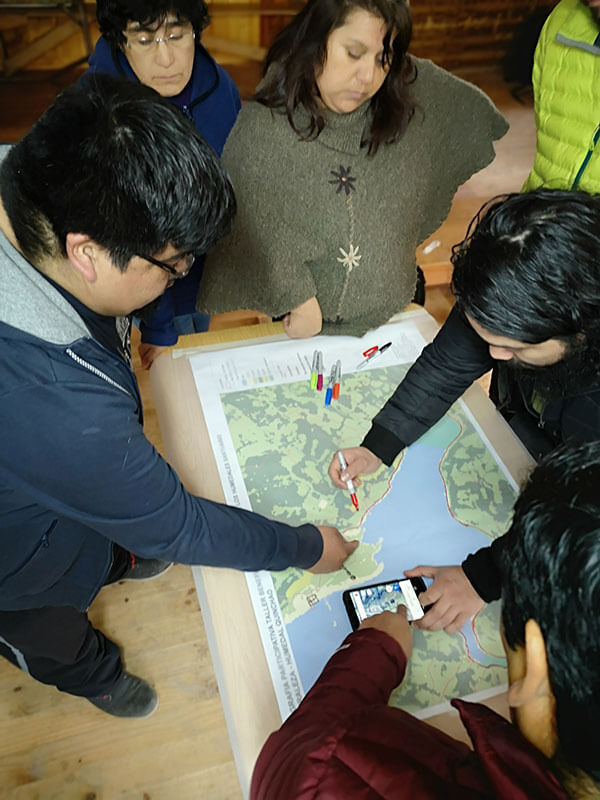
Participatory mapping of ecosystem services. Coastal wetland Villa Quinchao, Chile. Photo: Fundación Conservación Marina.
The results from these sites in Chile reaffirm the local need to implement sustainable management strategies to preserve ecosystem services. The participatory implementation of management plans, the building of agreements through mechanisms of good governance, and an adequate control by competent authorities were all factors that contributed to these results. The protection of ecosystem services at a regional level depends in large measure on collaborative solutions, good management practices, and behavioral changes implemented directly by the local communities. In this way, local development that integrates biodiversity conservation can be promoted, with nature-based solutions, leading to product diversification, innovation, and entrepreneurship. In turn, this generates investment and local employment, contributing significantly to the entire community’s well-being.
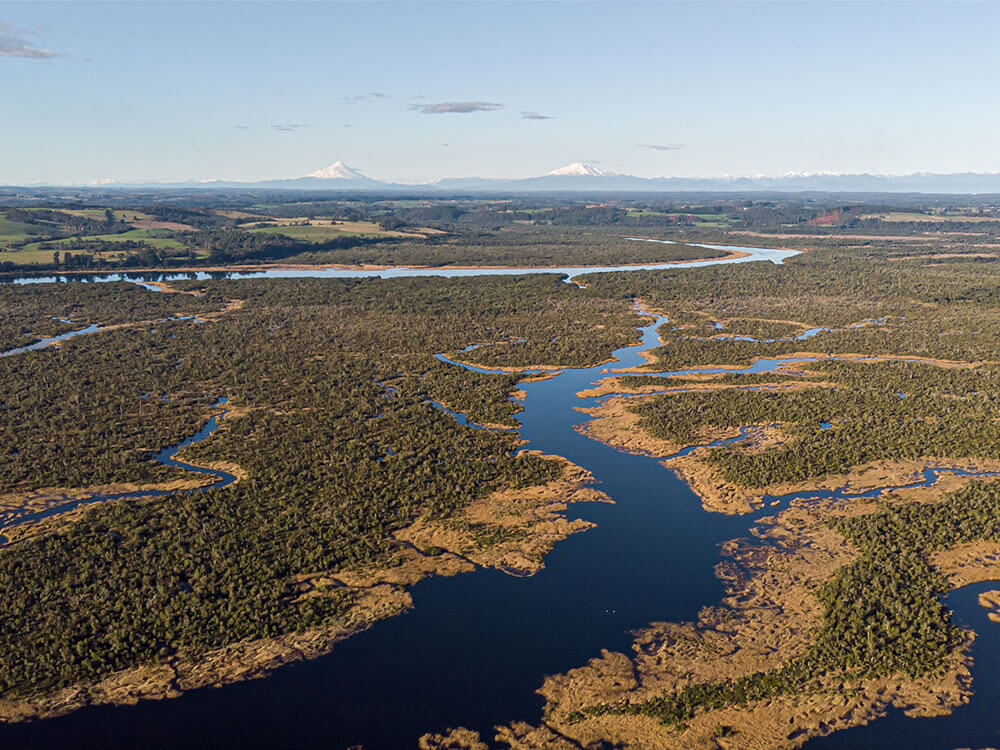
Conservation actions, sustainable management and implementation of management plans for protected areas contribute to the protection of biodiversity and human well-being by ensuring the provision of ecosystem services. Wetlands of Maullín river Nature Sanctuary and WHSRN site Humedales de Maullín, Chile. Photo: Fundación Conservación Marina.
Conserving sites that are critical for shorebirds also means contributing positively to the well-being of human communities. As well as conserving habitats that make it possible for birds to complete their life cycles successfully, it also assures the continued provision of food for local communities, ensuring their health and contributing towards new resilient economies and their sustainable reactivation.
The assessments of ecosystem services at the WHSRN Sites in Brazil and Chile were made possible thanks to the generous support of the BAND Foundation, Bobolink Foundation, David and Lucile Packard Foundation, and National Fish and Wildlife Foundation. For Bocana de Iscuandé, Asociación Calidris received support from U.S Fish and Wildlife Service, CRIMBI, Conservación Internacional-Colombia, Colombia Progresa, Nia Tero, Participación Pública en la Protección Ambiental, and the Consejo Comunitario Esfuerzo Pescador-Colombia, while Manomet’s role was made possible thanks to the Lindy E. Leddy Award for Sustainability.
The ecosystem service assessment at Lagoa do Peixe is part of Manomet’s Coalitions for Shorebird Conservation
Cover Photo: Fishermen and shorebirds at the Reserva Natural Amana Guyana Francesa. Photo: Monica Iglecia.





